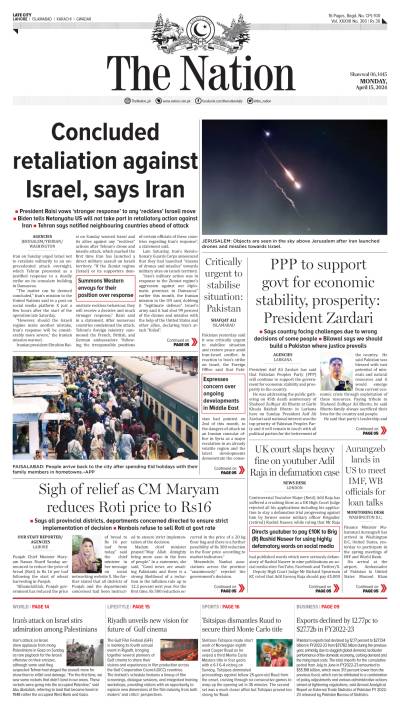One of the beliefs of modern times is that war creates turmoil and worsens economies. While according to a CBS/New York Times survey, almost a quarter of the citizens of the US responded that war improves the economic position of the US. There are many parameters to check the economic performance of a country during a specific period of time. Among them, real GDP per capita, unemployment rate, and inflation are most relevant. The favourable position of these parameters is associated with a higher real GDP per capita, lower unemployment rate, and stable inflation. One can scrutinise the US’ economic performance amid the 20th century based on these parameters.
The glimpse at the dynamic pattern of GDP per capita of the US suggests a definite rise of almost ten times in the 20th century. While this surge is also a victim of the downhill ride of GDP per capita of the US amid the Great Depression, the first oil price shock, the second oil price shock, and the financial crisis of 2007-2008. Contrarily, the GDP per capita of the US surged amid World War I, World War II, the Korean War, and the Vietnam War. Amongst these wartimes, the GDP growth of the US observed almost 17 percent in 1942 (World War II), 11.4 percent in 1951 (Korean War), and 7.3 percent in 1966 (Vietnam War). Moreover, the unemployment rate had slashed by 12.7 percent in World War II, and 3 percent in the Korean War, and the Vietnam War respectively.
The historical pattern of real GDP per capita and unemployment rate depicts that US economic performance remains ideal amid wartime. Now the question is; how did the US achieve this ideal economic performance amid wartime? For instance, amid World War II, the US federal government prioritised the production of war-time goods at the core and devoted almost 40 percent of US GDP to war production. For the smooth functioning of war production, a new administrative body was established; the War Production Board. The Board was responsible for the utilisation of scarce materials such as rubber, steel, and aluminium for the production of the military, rather than civilian goods. The higher war production was carried out to meet the international demand for war products because the US did not directly participate in any world wars.
Although the US did not directly participate in any world wars, an average of federal defence amid wartime was more than 10 percent of GDP and 5 percent amid peacetime. The US spent $778 billion in 2020 on military spending, which is more than the combined defence spending of the next top nine countries. Heightened military spending contributes to new avenues of technological advances in military products, which in turn, increases the exports of military products and also accelerates other industries to contribute to the GDP growth process.
The US is the world’s largest arms-exporting country with a share of 37 percent in the world’s exports, according to SIPRI’s Arms Transfers Database. The US sold almost $237 billion worth of arms in 2016-2020, which was 15 percent higher than the previous demi-decade.
For the past decade, the US and Russia have competed with each other to sell gas to Europe. The geographical location of Russia made it able to be a major exporter of gas to Europe. In 2021, Europe imported 155 billion cubic meters gas from Russia, which is 45 percent of the total gas imports and 40 percent of the total used, according to the International Energy Agency. The tragedy of Russia’s invasion of Ukraine forced Europe to decrease the Russian gas by two-thirds before the end of the year. This invasion is a business opportunity for the US natural gas industry to fill the gap in the years ahead. Currently, the US is taking advantage of this opportunity by exporting 70 percent of all LNG to Europe in February, according to the Centre for Liquefied Natural Gas (CLNG).
Russia is the third-largest oil producer in the world following the US and Saudi Arabia. The conflict of Russia-Ukraine ultimately led to the Brent oil price soar to a 14-year high of $140. Moreover, the price of regular gas soared to $4 a gallon which is a rise of 50 percent in a year. This surge in energy prices will make the manufacturing products of Europe less competitive in price and provides an opportunity for the manufacturing sector of the US to grow. The manufacturing share of the US in real GDP terms stalled in the range of 11.3 percent to 13.6 percent, while this share is far less than major economies of Europe. US manufacturing products are less competitive in prices due to higher wages in the manufacturing sector, which makes manufacturing products a less-cost advantage.
Another possible outcome of the Russia-Ukraine conflict is the higher demand of the US dollar from investors to diversify risk and import payments by Europe for increased demand for energy products. This will eventually strengthen the US currency. Finally, the Russia-Ukraine conflict provides an opportunity for the US to grow by getting access to European markets, exporting arms, internationally competing in the price of manufacturing products, and strengthening the US currency. The ultimate benefit to the US from the Russia-Ukraine conflict will be quantified when the war finally matures.
The glimpse at the dynamic pattern of GDP per capita of the US suggests a definite rise of almost ten times in the 20th century. While this surge is also a victim of the downhill ride of GDP per capita of the US amid the Great Depression, the first oil price shock, the second oil price shock, and the financial crisis of 2007-2008. Contrarily, the GDP per capita of the US surged amid World War I, World War II, the Korean War, and the Vietnam War. Amongst these wartimes, the GDP growth of the US observed almost 17 percent in 1942 (World War II), 11.4 percent in 1951 (Korean War), and 7.3 percent in 1966 (Vietnam War). Moreover, the unemployment rate had slashed by 12.7 percent in World War II, and 3 percent in the Korean War, and the Vietnam War respectively.
The historical pattern of real GDP per capita and unemployment rate depicts that US economic performance remains ideal amid wartime. Now the question is; how did the US achieve this ideal economic performance amid wartime? For instance, amid World War II, the US federal government prioritised the production of war-time goods at the core and devoted almost 40 percent of US GDP to war production. For the smooth functioning of war production, a new administrative body was established; the War Production Board. The Board was responsible for the utilisation of scarce materials such as rubber, steel, and aluminium for the production of the military, rather than civilian goods. The higher war production was carried out to meet the international demand for war products because the US did not directly participate in any world wars.
Although the US did not directly participate in any world wars, an average of federal defence amid wartime was more than 10 percent of GDP and 5 percent amid peacetime. The US spent $778 billion in 2020 on military spending, which is more than the combined defence spending of the next top nine countries. Heightened military spending contributes to new avenues of technological advances in military products, which in turn, increases the exports of military products and also accelerates other industries to contribute to the GDP growth process.
The US is the world’s largest arms-exporting country with a share of 37 percent in the world’s exports, according to SIPRI’s Arms Transfers Database. The US sold almost $237 billion worth of arms in 2016-2020, which was 15 percent higher than the previous demi-decade.
For the past decade, the US and Russia have competed with each other to sell gas to Europe. The geographical location of Russia made it able to be a major exporter of gas to Europe. In 2021, Europe imported 155 billion cubic meters gas from Russia, which is 45 percent of the total gas imports and 40 percent of the total used, according to the International Energy Agency. The tragedy of Russia’s invasion of Ukraine forced Europe to decrease the Russian gas by two-thirds before the end of the year. This invasion is a business opportunity for the US natural gas industry to fill the gap in the years ahead. Currently, the US is taking advantage of this opportunity by exporting 70 percent of all LNG to Europe in February, according to the Centre for Liquefied Natural Gas (CLNG).
Russia is the third-largest oil producer in the world following the US and Saudi Arabia. The conflict of Russia-Ukraine ultimately led to the Brent oil price soar to a 14-year high of $140. Moreover, the price of regular gas soared to $4 a gallon which is a rise of 50 percent in a year. This surge in energy prices will make the manufacturing products of Europe less competitive in price and provides an opportunity for the manufacturing sector of the US to grow. The manufacturing share of the US in real GDP terms stalled in the range of 11.3 percent to 13.6 percent, while this share is far less than major economies of Europe. US manufacturing products are less competitive in prices due to higher wages in the manufacturing sector, which makes manufacturing products a less-cost advantage.
Another possible outcome of the Russia-Ukraine conflict is the higher demand of the US dollar from investors to diversify risk and import payments by Europe for increased demand for energy products. This will eventually strengthen the US currency. Finally, the Russia-Ukraine conflict provides an opportunity for the US to grow by getting access to European markets, exporting arms, internationally competing in the price of manufacturing products, and strengthening the US currency. The ultimate benefit to the US from the Russia-Ukraine conflict will be quantified when the war finally matures.






